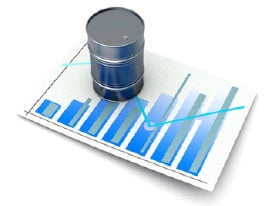The cycle for any commodity follows the same basic pattern…
When prices are low, production falls. As new supplies diminish, the market tightens and prices move higher. The higher prices incentivize producers to invest in production capacity and increase output. Eventually, the market becomes oversupplied, prices fall, and the cycle starts all over again.
 Of course, this is a simplified model of what drives commodity cycles. Booms and busts can be amplified and extended by speculators, by unexpected shifts in demand, or even by interventions from central banks and governments.
Of course, this is a simplified model of what drives commodity cycles. Booms and busts can be amplified and extended by speculators, by unexpected shifts in demand, or even by interventions from central banks and governments.
Regardless of the causes, commodity markets will always be cyclical in nature. Commodities as a group can be pressured upward or downward by extrinsic forces such as monetary inflation or credit contraction.
Continue reading
...
Read more »